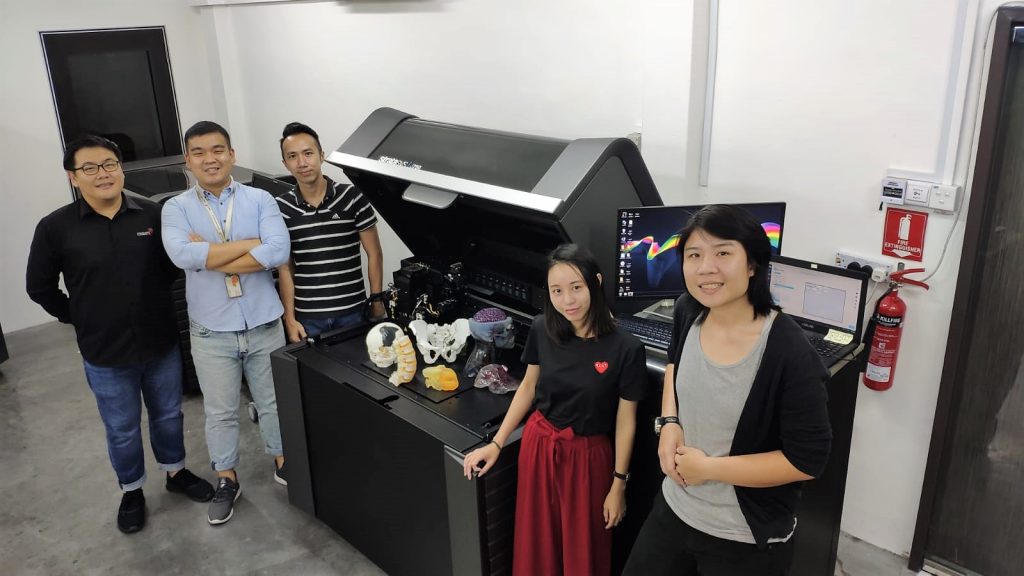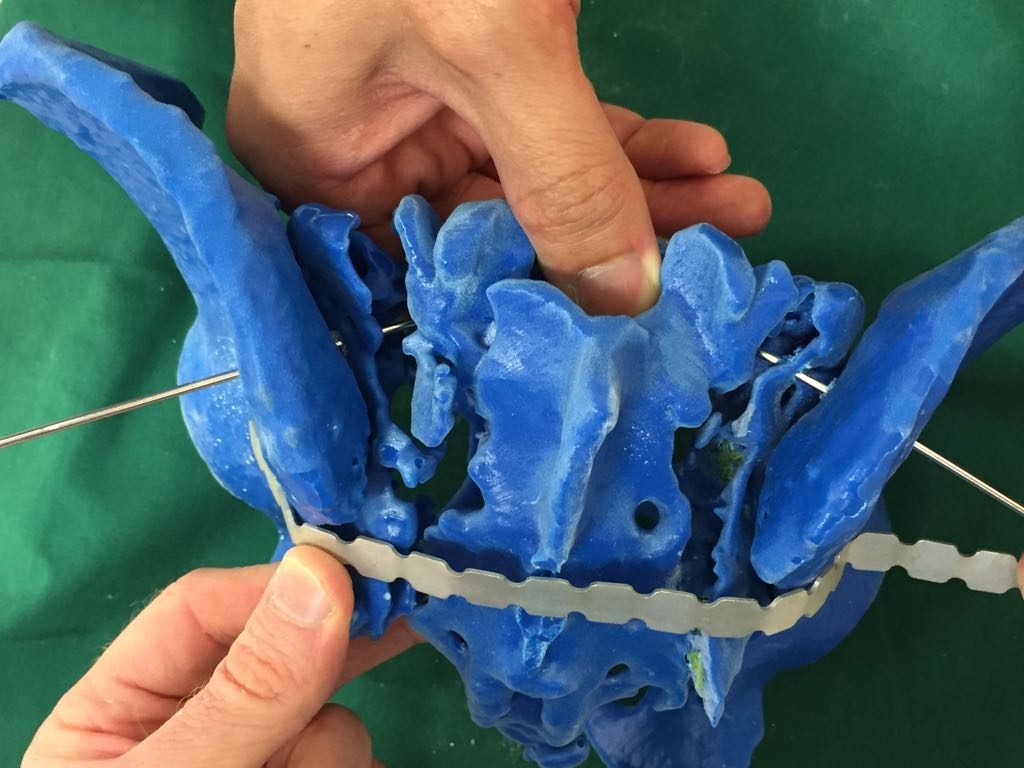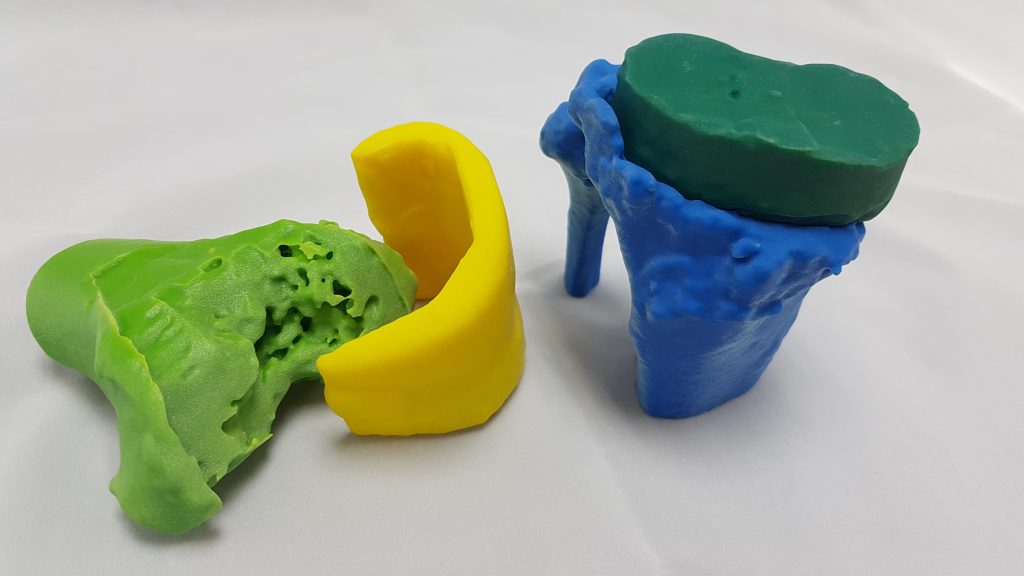Repairing skull defects with custom cranial implants, otherwise known as a cranioplasty, is expensive and takes a great deal of time, as the the existing process often results in bottlenecks due to long wait times for the implant to be designed, manufactured, and shipped. While 3D printing the implants can help with these issues, a team of researchers from the Graz University of Technology and Medical University of Graz in Austria published a paper, “An Online Platform for Automatic Skull Defect Restoration and Cranial Implant Design,” about an automated system for cranial implant design they’ve devised that can do even better.
“Due to the high requirements for cranial implant design, such as the professional experience required and the commercial software, cranioplasty can result in a costly operation for the health care system,” the researchers wrote. “On top, the current process is a cause of additional suffering for the patient, since a minimum of two surgical operations are involved: the craniotomy, during which the bony structure is removed, and the cranioplasty, during which the defect is restored using the designed implant. When the cranial implant is externally designed by a third-party manufacturer, this process can take several days [1], leaving the patient with an incomplete skull.”
In the case study they cited above, the researchers explained that a professional design center in the UK designed the cranial implant for a patient who lived in Spain. The CT scans had to be transferred from the hospital in Spain to the UK design center, and then a separate UK company 3D printed the titanium implant, which was shipped back to Spain. That’s a lot of unnecessary back and forth.
“Therefore, the optimization of the current workflow in cranioplasty remains an open problem, with implant design as primary bottleneck,” they stated.

“Illustration of In-Operation Room process for cranial implant design and manufacturing. Left: a possible workflow. Right: how the implant should fit with the skull defect in terms of defect boundary and bone thickness.”
One option is developing ad hoc free CAD software for cranial implant design, but the design process still requires expertise and an extended wait.
“In this study, we introduce a fast and fully automatic system for cranial implant design. The system is integrated in a freely accessible online platform,” the team explained. “Furthermore, we discuss how such a system, combined with AM, can be incorporated into the cranioplasty practice to substantially optimize the current clinical routine.”
The system they developed has been integrated in Studierfenster, an open, cloud-based medical image processing platform that, with the help of deep learning algorithms, automatically restores the missing part of a skull. The platform then generates the STL file for a patient-specific implant by subtracting the defective skull from the completed one, and it can be 3D printed on-site.
“Furthermore, thanks to the standard format, the user can thereafter load the model into another application for post-processing whenever necessary,” the researchers wrote. “Multiple additional features have been integrated into the platform since its first release, such as 3D face reconstruction from a 2D image, inpainting and restoration of aortic dissections (ADs) [4], automatic aortic landmark detection and automatic cranial implant design. Most of the algorithms behind these interactive features run on the server side and can be easily accessed by the client using a common browser interface. The server-side computations allow the use of the remote platform also on smaller devices with lower computational capabilities.”
3D printing the implants makes the process faster, and combining it with an automated implant design solutions speeds things up even more. The researchers explained how their optimized workflow could potentially go:
“After a portion of the skull is removed by a surgeon, the skull defect is reconstructed by a software given as input the post-operative head CT of the patient. The software generates the implant by taking the difference between the two skulls. Afterwards, the surface model of the implant is extracted and sent to the 3D printer in the operation room for 3D printing. The implant can therefore be manufactured in loco. The whole process of implant design and manufacturing is done fully automatically and in the operation room.”
The cost decreases, as no experts are required, and the wait time is also reduced, thanks to the automatic implant design software and on-site 3D printing. The patient’s suffering will also decrease, since the cranioplasty can be performed right after removal of the tumor.

“Architecture of automatic cranial implant design system in Studierfenster. The server side is responsible for implant generation and mesh rendering. The browser side is responsible for 3D model visualization and user interaction.”
The team’s algorithm, which processes volumes rather than a 3D mesh model, can directly process high dimensional imaging data, and is accessible to users, and easy to use, through Studierfenster. Another algorithm on the server side of the system converts the volumes of the defective, completed skull, and the implant into 3D surface mesh models. Once they’re rendered, the user can inspect the downloadable models in the browser window.

“An example of automatic skull defect restoration and implant design. First row: the defective skull, the completed skull and the implant. Second row: how the implant fits with the defective skull in term of defect boundary, bone thickness and shape. To differentiate, the implant uses a different color from the skull.”
“The system is currently intended for educational and research use only, but represents the trend of technological development in this field,” the researchers concluded. “As the system is integrated in the open platform Studierfenster, its performance is significantly dependent on the hardware/architecture of the platform. The conversion of the skull volume to a mesh can be slow, as the mesh is usually very dense (e.g., millions of points). This will be improved by introducing better hardware on the server side. Another limiting factor is the client/server based architecture of the platform. The large mesh has to be transferred from server side to browser side in order to be visualized, which can be slow, depending on the quality of the user’s internet connection.”
Discuss this and other 3D printing topics at 3DPrintBoard.com or share your thoughts below.
The post Free Automated Software to Design 3D Printable Cranial Implants appeared first on 3DPrint.com | The Voice of 3D Printing / Additive Manufacturing.




